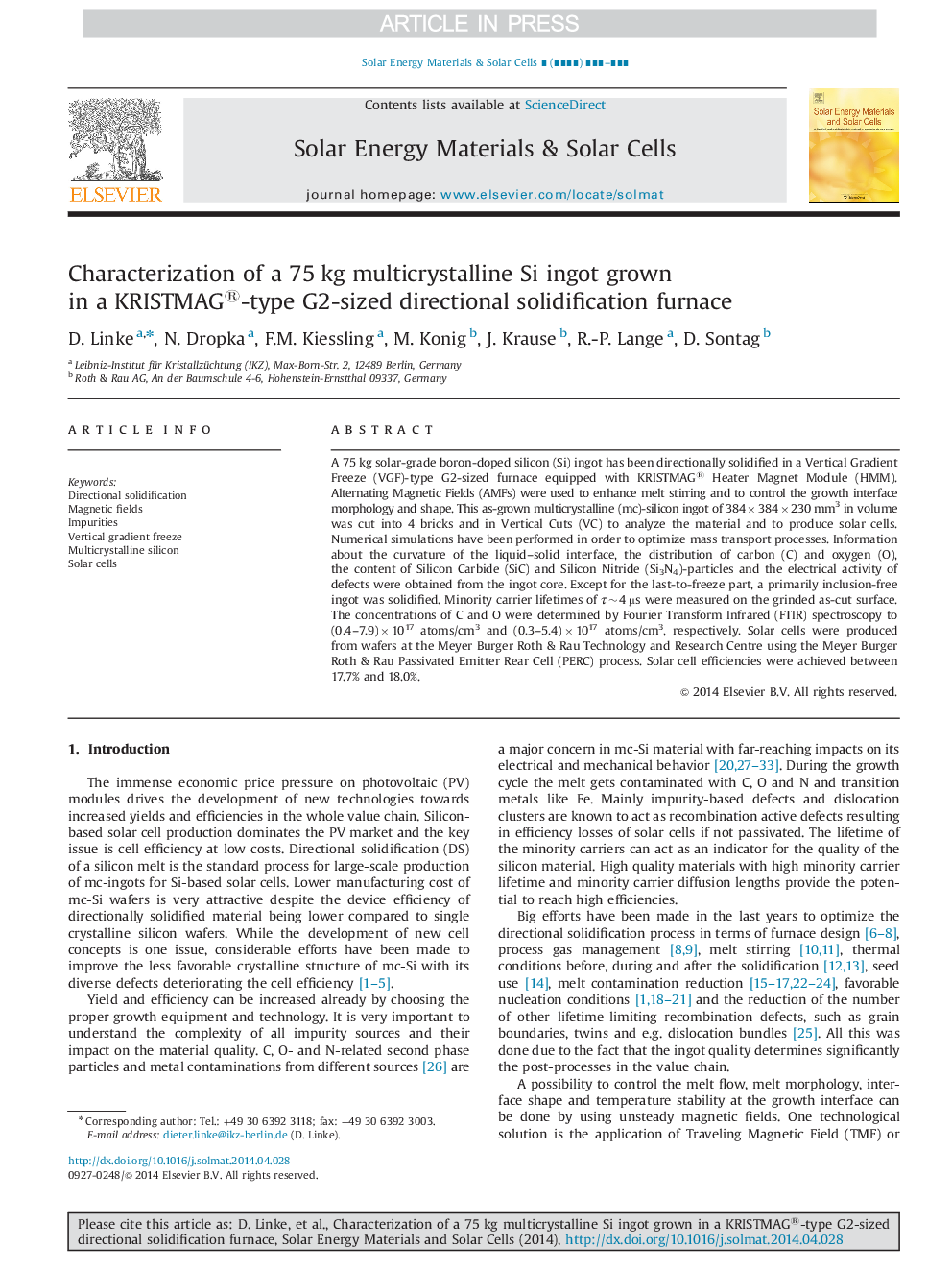| Article ID | Journal | Published Year | Pages | File Type |
|---|---|---|---|---|
| 6535654 | Solar Energy Materials and Solar Cells | 2014 | 9 Pages |
Abstract
A 75 kg solar-grade boron-doped silicon (Si) ingot has been directionally solidified in a Vertical Gradient Freeze (VGF)-type G2-sized furnace equipped with KRISTMAG® Heater Magnet Module (HMM). Alternating Magnetic Fields (AMFs) were used to enhance melt stirring and to control the growth interface morphology and shape. This as-grown multicrystalline (mc)-silicon ingot of 384Ã384Ã230 mm3 in volume was cut into 4 bricks and in Vertical Cuts (VC) to analyze the material and to produce solar cells. Numerical simulations have been performed in order to optimize mass transport processes. Information about the curvature of the liquid-solid interface, the distribution of carbon (C) and oxygen (O), the content of Silicon Carbide (SiC) and Silicon Nitride (Si3N4)-particles and the electrical activity of defects were obtained from the ingot core. Except for the last-to-freeze part, a primarily inclusion-free ingot was solidified. Minority carrier lifetimes of Ï~4 µs were measured on the grinded as-cut surface. The concentrations of C and O were determined by Fourier Transform Infrared (FTIR) spectroscopy to (0.4-7.9)Ã1017 atoms/cm3 and (0.3-5.4)Ã1017 atoms/cm3, respectively. Solar cells were produced from wafers at the Meyer Burger Roth & Rau Technology and Research Centre using the Meyer Burger Roth & Rau Passivated Emitter Rear Cell (PERC) process. Solar cell efficiencies were achieved between 17.7% and 18.0%.
Keywords
Related Topics
Physical Sciences and Engineering
Chemical Engineering
Catalysis
Authors
D. Linke, N. Dropka, F.M. Kiessling, M. König, J. Krause, R.-P. Lange, D. Sontag,
